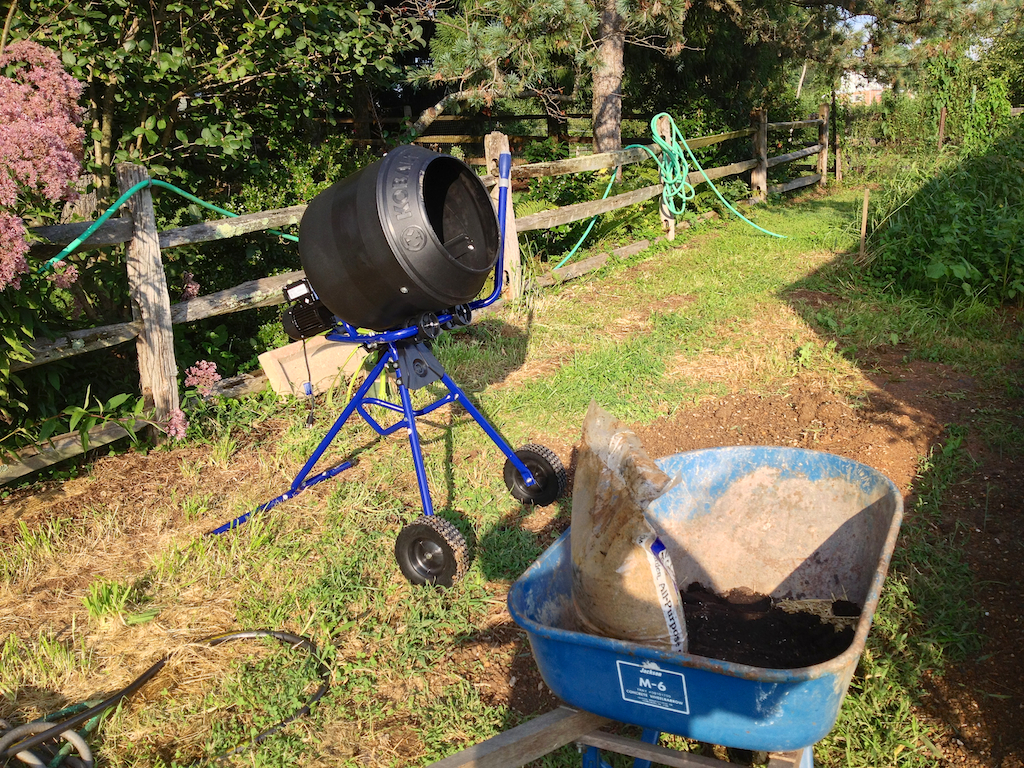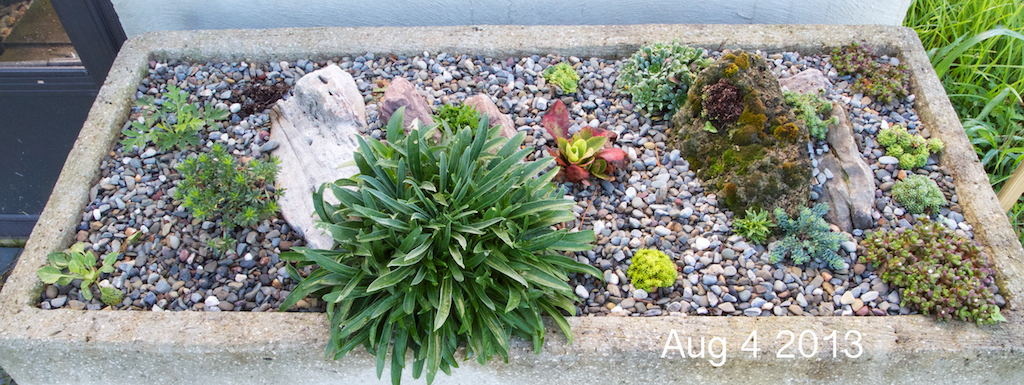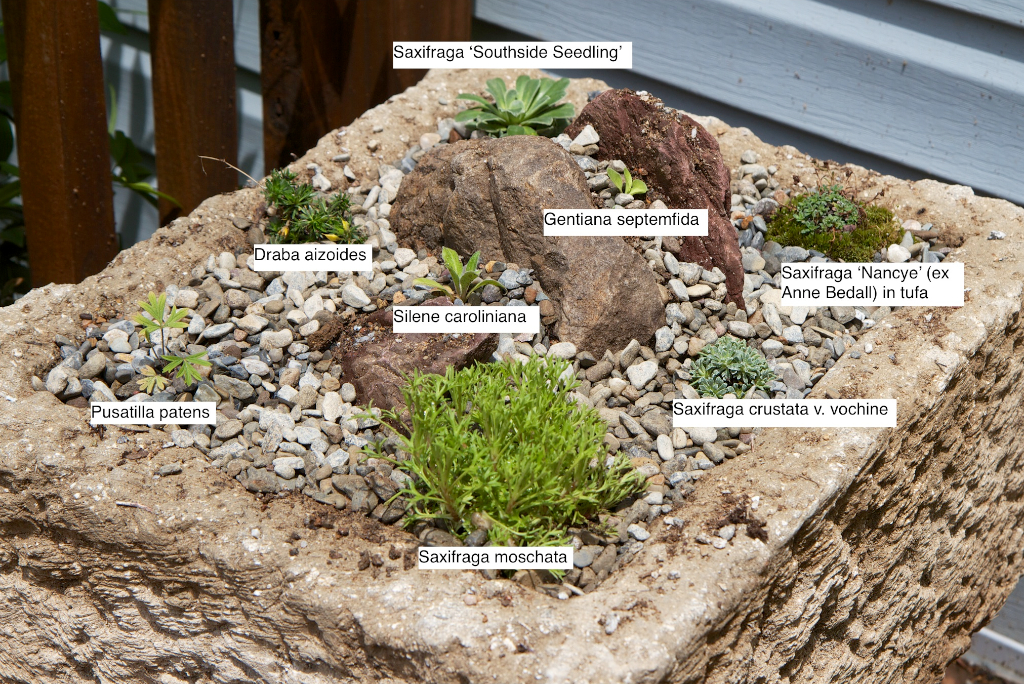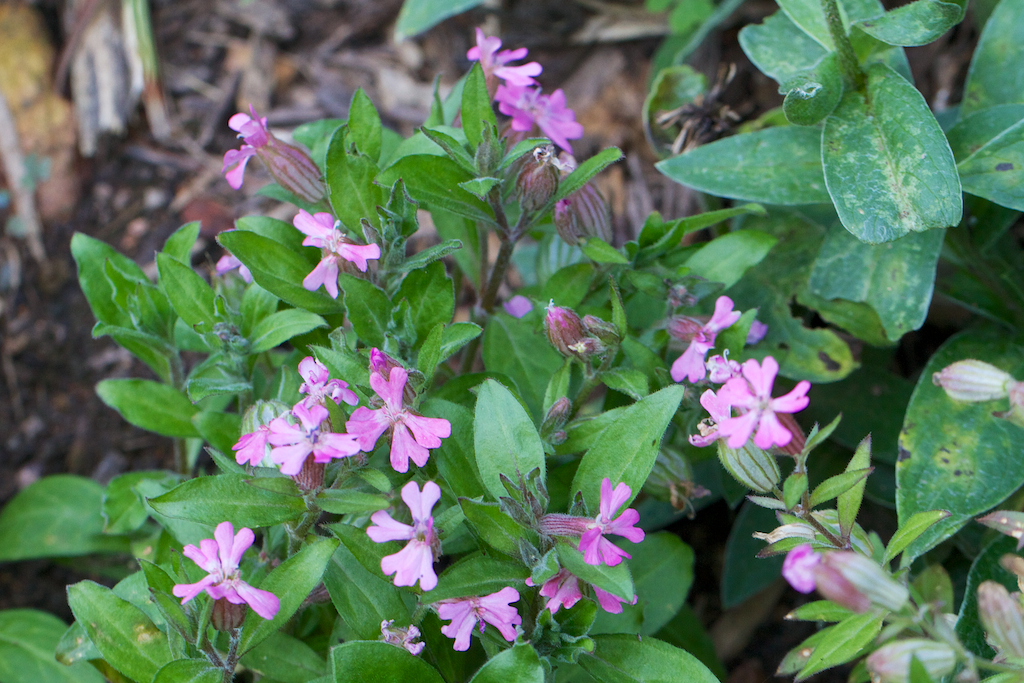Two months ago I planted two troughs and set out a number of alpine plants that I had been harboring this year. I thought it might be useful just to touch bases with the plants after two months of growing in their new conditions. The troughs are set in sunny locations and have received larger than normal rainfall over this period. I have supplement with the hose only a couple of times.
The current state of the Large Trough is shown here.
This can be compared with the original planting.
What immediately stands out is the Boechera koehleri which took off like a rocket. This is a relatively rare rock cress from Northern California but it has totally exceeded the bounds of the trough and I’ve since shifted it to its own pot. Interestingly when I pulled it out the roots were relatively well behaved. I had planted several other instances of the plant around the yard and none of the others showed more than 10% of the growth of this specimen. The two losses were both Saxifrages, one paniculata and the other unknown in the tufa. My guess is that it was too much sun for the paniculata. Most of the other plants have done pretty well. The Daphne looks very happy and the Delosperma is spreading nicely. The Lewisia tweedyi is one I’m keeping my eye on, hoping that it makes through to next year.
For the small trough that I planted at the same time the comparison is as follows.
The original planting looked like
The position of this trough gets a little more shade than the large trough but it’s still pretty sunny. The Silene caroliana grew so rapidly that I had to take it out. I then put in a small primula that did not succeed. The Saxifraga growing in the Tufa is the only other failure in this trough. Everyone else is prospering. Here is the Silene now ensconced in the front garden.
It’s interesting to note that the tufa plants have not succeeded all. In principal the tufa should work well in the trough but it may be that it’s too sunny for the Saxifragas.
The longer term plan for more environmental opportunities for the alpines is the new alpine bed that I’ve built next to the greenhouse.
This has been a pretty labor intensive effort and I’m not done yet. Just digging a trench and then laying the block was testing my muscle development, but then you have to fill the bed after building the bed. I began by adding topsoil to bring the level up to about a foot short of the top.
Then, to do the remainder of the fill, I bought a cement mixer.  To gain some sense of what’s involved, 1 foot deep by 14 feet long by 3 feet wide amounts to 42 cubic feet. That is roughly 4000 pounds of soil mix. Mixing it by hand just didn’t seem to make sense. I used a formula of 1 part small gravel (starter grit), 1 part larger gravel (developer grit), 1 part topsoil, 1 part miracle gro potting soil, and 1/2 part garden sand.
To gain some sense of what’s involved, 1 foot deep by 14 feet long by 3 feet wide amounts to 42 cubic feet. That is roughly 4000 pounds of soil mix. Mixing it by hand just didn’t seem to make sense. I used a formula of 1 part small gravel (starter grit), 1 part larger gravel (developer grit), 1 part topsoil, 1 part miracle gro potting soil, and 1/2 part garden sand.
This particular bed is on the shade side of the greenhouse so I think the Saxifragas should be happy when this is done.










Nice. I assume these plants were all ordered online? There aren’t any MD nurseries selling alpines are there?
They were mostly from the annual alpine sale at Stonecrop Gardens in New York, the final closeout sale at Blanchette Nursery in Boston, and seeds I grew from the various Rock Gardening Societies in the U.S. and around the world. Alpines are definitely harder to grow in Maryland.